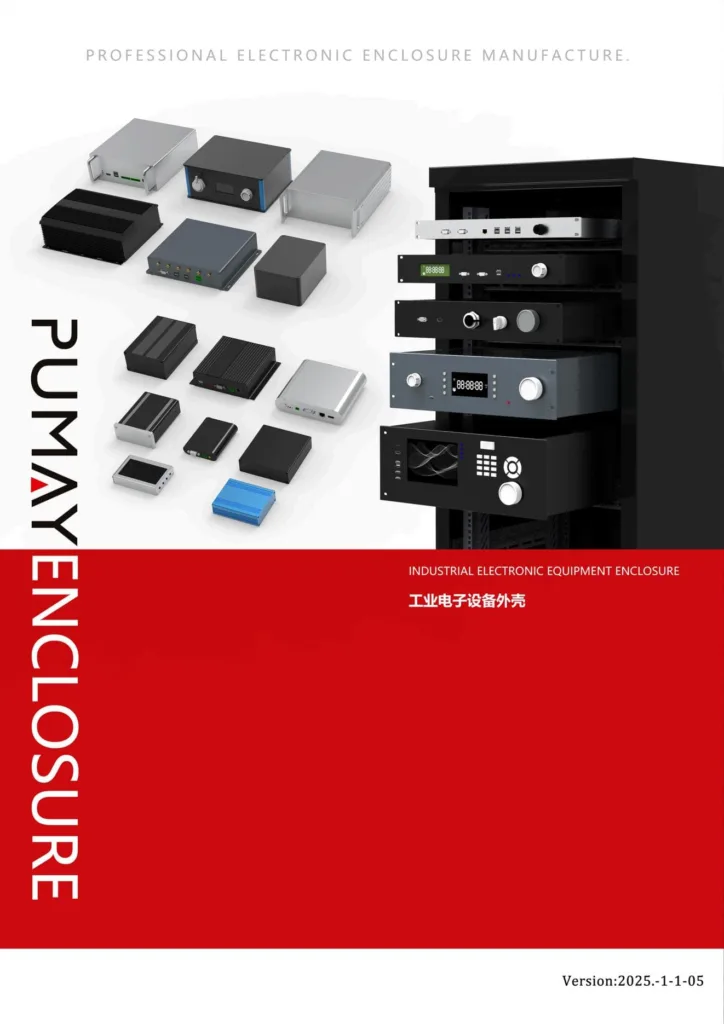Thermal Design Optimization for Aluminum Extrusion Enclosures: How Can You Achieve Maximum Efficiency?
Struggling with overheating electronics in your aluminum enclosure? Poor thermal management leads to premature failures, costly redesigns, and significant downtime.
Optimizing thermal design1 involves selecting appropriate extrusion profiles, maximizing heat dissipation2 with fins, strategic vent placement, and considering thermal interface materials3 to enhance heat transfer efficiency.
 "Thermal Design Optimization for Aluminum Extrusion Enclosures"
"Thermal Design Optimization for Aluminum Extrusion Enclosures"
I've worked on many projects where engineers overlooked thermal design at the outset, leading to expensive modifications later. Let's dive into the essentials of thermal optimization for aluminum extrusion4 enclosures.
How can extrusion profiles improve thermal management?
Facing thermal bottlenecks because your enclosure design doesn't adequately dissipate heat? Selecting unsuitable aluminum profiles may hinder effective heat transfer.
Aluminum extrusion profiles designed with integrated heat sinks5, fins, or increased surface area6 significantly improve heat dissipation2 efficiency by enhancing conduction and convection.
 "Optimizing Extrusion Profiles for Thermal Management"
"Optimizing Extrusion Profiles for Thermal Management"
Choosing the right extrusion profile is the cornerstone of effective thermal management. Profiles designed specifically for heat dissipation have integrated features like fins, ridges, or extended surfaces. These features dramatically increase surface area, facilitating faster heat transfer through convection.
Consider these profile features for better thermal management:
| Profile Type | Heat Dissipation | Design Complexity | Manufacturing Cost |
|---|---|---|---|
| Flat Surface | Low | Simple | Low |
| Ribbed Surface | Medium | Moderate | Moderate |
| Integrated Heat Sinks | High | High | Moderate-High |
In my experience, choosing integrated heat sink profiles early in design significantly reduces the risk of overheating. It prevents costly redesigns, especially in high-power electronics7 applications.
What role do vent holes8 play in thermal management?
Are you noticing ineffective cooling despite proper heat sink profiles? Poor ventilation causes heat build-up, leading to equipment malfunction.
Strategically placed vent holes enhance airflow, promoting natural convection9 and reducing internal temperatures, essential for reliable operation of sensitive electronics in aluminum enclosures.
 "Optimizing Vent Holes for Thermal Management"
"Optimizing Vent Holes for Thermal Management"
I've seen several designs fail due to inadequate ventilation. Vent holes encourage natural convection, allowing cool air in and warm air out. The key to effective ventilation lies in strategic placement:
- Vertical positioning: Vents at the bottom and top create natural chimney effects.
- Size & shape: Larger, elongated vent holes facilitate better airflow.
- Filtering: Optional mesh filters prevent dust ingress, maintaining cooling efficiency10.
Here's a practical comparison:
| Vent Placement | Effectiveness | Dust Protection | Complexity |
|---|---|---|---|
| Top-Bottom | High | Medium | Low |
| Side-only | Medium | Low | Low |
| Multi-sided | High | Medium-High | Moderate |
Choosing optimal vent placement dramatically reduces internal temperatures. It's a simple solution often overlooked, yet highly effective.
Why are thermal interface materials3 critical for efficient heat transfer?
Is your enclosure still overheating despite heat sinks and ventilation? Poor heat transfer between electronic components and the enclosure can compromise system performance.
Thermal interface materials (TIMs), such as thermal pads11, grease, or gap fillers, improve heat transfer efficiency by minimizing thermal resistance12 between electronic components and aluminum enclosures.
 "Thermal Interface Materials for Aluminum Enclosures"
"Thermal Interface Materials for Aluminum Enclosures"
I've found thermal interface materials frequently undervalued in enclosure design. Without proper thermal pads or grease, heat transfer efficiency between components and enclosure surfaces significantly drops. This results in hotspots and uneven cooling.
Common types of TIMs include:
| Material | Thermal Conductivity | Ease of Application | Cost Impact |
|---|---|---|---|
| Thermal Grease | High | Moderate | Low |
| Thermal Pads | Medium-High | Easy | Moderate |
| Gap Fillers | Medium | Easy | Moderate |
In my projects, thermal pads offer the best compromise, balancing effective heat transfer with ease of installation. This reduces assembly time, ensuring consistent thermal performance.
How can anodizing13 influence thermal management?
Do you think surface treatment is purely aesthetic? Ignoring coating effects on thermal performance can lead to unexpected overheating issues.
Anodizing aluminum surfaces enhances emissivity14, improving radiative heat transfer, making it beneficial for passive cooling in high-temperature applications.
 "Anodizing Effect on Thermal Management"
"Anodizing Effect on Thermal Management"
Many engineers underestimate anodizing's impact on thermal efficiency. Anodizing isn't just about corrosion resistance or aesthetics—it directly influences thermal performance by increasing the emissivity of aluminum surfaces. Higher emissivity enables the enclosure to radiate heat away more effectively.
Here’s a quick comparison of finishes:
| Surface Finish | Emissivity Level | Corrosion Resistance | Cost Impact |
|---|---|---|---|
| Bare Aluminum | Low | Low-Medium | Low |
| Anodized Aluminum | High | High | Moderate |
| Painted Aluminum | Medium | Medium-High | Moderate |
In several challenging projects, anodized aluminum significantly improved passive cooling performance. Incorporating anodizing early enhances thermal management efficiency, benefiting overall system reliability.
Conclusion
Optimizing thermal design in aluminum extrusion enclosures requires careful selection of profiles, strategic ventilation, proper thermal interfaces, and anodized finishes. Early planning ensures maximum reliability and efficiency for your electronics.
Explore this resource to understand essential thermal design practices that can enhance your project's efficiency. ↩
Discover effective methods for improving heat dissipation to prevent overheating in electronic devices. ↩ ↩
Understand the critical role of thermal interface materials in improving heat transfer efficiency. ↩ ↩
Learn how aluminum extrusion techniques can significantly enhance thermal management in your designs. ↩
Learn about various heat sink designs and their effectiveness in managing heat in electronics. ↩
Understand the relationship between surface area and heat transfer efficiency in thermal management. ↩
Explore the unique challenges of thermal management in high-power electronics and solutions to address them. ↩
Find out how strategically placed vent holes can enhance airflow and cooling in enclosures. ↩
Discover how natural convection works and its importance in maintaining optimal temperatures. ↩
Discover key factors that affect cooling efficiency and how to optimize them in your designs. ↩
Explore the advantages of thermal pads for efficient heat transfer in electronic applications. ↩
Understand thermal resistance and its impact on the effectiveness of heat transfer in electronics. ↩
Explore the benefits of anodizing for enhancing thermal performance in aluminum enclosures. ↩
Learn about emissivity and its critical role in enhancing heat radiation in thermal designs. ↩





